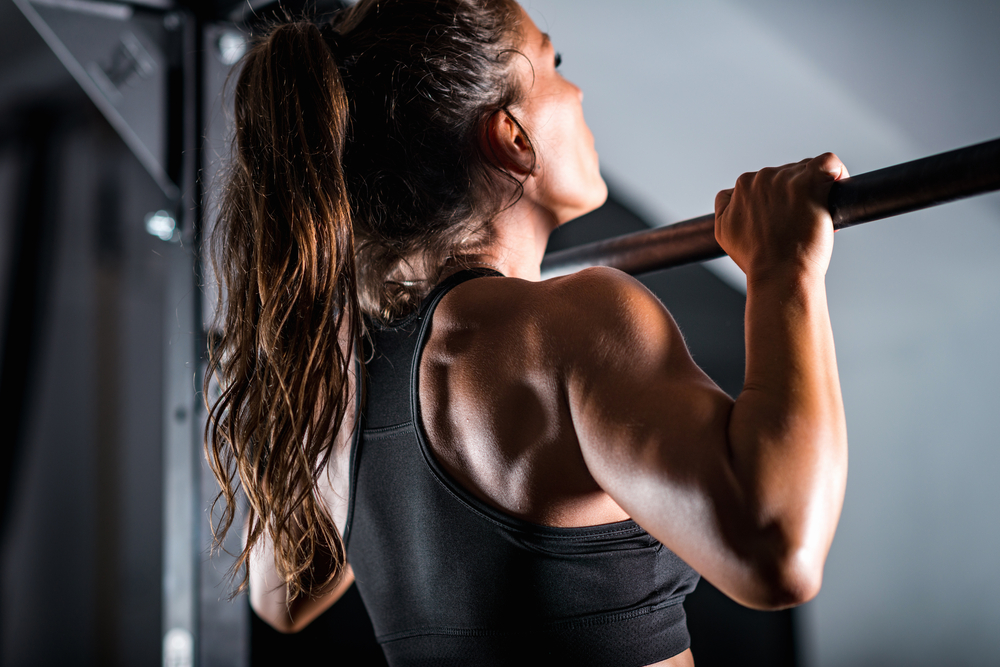Few men believe it, that you don’t need barbells, dumbbells or machines to build muscle; in fact, weight-training equipment often inhibits the process. That’s because it requires you to be in a specific location, which might explain why more people consider themselves runners than lifters. After all, running is the most accessible form of exercise.
Best exercises for training without barbells
Consider the pull-up: It’s the standard by witch all body-weight exercises are measured. And even the most experienced lifters will agree that there’s no better muscle builder exercise for the upper body. The reason for its effectiveness: It takes full advantage of the scientific laws of motion and leverage, placing your body in a position that forces your back and arms muscle to lift your entire body weight.
Now imagine if all body-weight exercises were as challenging as the pull-up. You’d be able to build body muscle anywhere and any time.

I will tell you the few laws of body-weight training.
The farther you move, the more muscle you work
Do more work, build more muscle. Of course, in a weight-free workout, you can’t increase force. But you can boost your work output by moving a greater distance during each repetition.
For many body-weight exercises your range of motion ends at the floor. Try placing your front or back foot on a step when doing lunges; position your hands on steps or your feet on a chair when doing push-up.
The longer your body, the weaker you become
By increasing the distance between the point of force and the end of the object you’re trying to lift, you decrease your mechanical advantage. Think of it this way: An empty barbell is easy to lift off the floor if you grab in the middle. But try moving a few inches in one direction and it instantly seems heavier. Raise your hands above your head – so your arms are straight and in line with your body – during a lunge, squat, crunch, or sit-up. If that’s too hard, split the distance by placing your hands behind your head.
Moving in two directions is better than moving in one
Human movement occurs on three different geometric planes:
1. The transverse plane, for rotational movements
2. The frontal plane, for side-to-side movements
3. The sagittal plane, for front-to-back and up-and-down movements
Most weight-lifting movements –the bench press, squat, curl, lunge, and chin-up, to name a few –are performed on the sagittal plane; the balance of exercise –for instance, the lateral lunge and side bend –occur almost entirely on the frontal plane. This means that most people rarely train their bodies on the transverse plane, despite using rotation constantly in everyday life, as well as in every sport.
Simply twist your torso to the right or left in exercises such as the lunge, sit-up, and push-up.
The less contact your body has with the floor, the more your muscles must compensate
The smaller the percentage of an object’s surface area that’s touching a solid base, the less stable that object is. Humans have a built-in stabilization system: Muscles. And by forcing that internal support system to kick in –by making your body less stable –you’ll make any exercise harder, while activating dozens more muscles. Hold one foot in the air during virtually any exercise, including push-up, squats, and deadlifts. You can also do push-up on your fingertips or your fists.
As elastic energy decreases, muscle involvement increases
When you lower your body during any exercise, you build up “elastic energy” in your muscles. Just like in a coiled spring, that elasticity allows you to bounce back to the starting position, reducing the work your muscles have to do. Eliminate the bounce and you’ll force your body to recruit more muscle fibers to get you moving again. Use the 4-second pause in any exercise. And give yourself an extra challenge by adding an explosive component, forcefully pushing your body off the floor –into the air as high as you can –during a push-up, lunge, or squat. Because you’re generating maximum force without any help from elastic energy, you’ll activate the greatest number of muscle fibers possible.







2 Comments